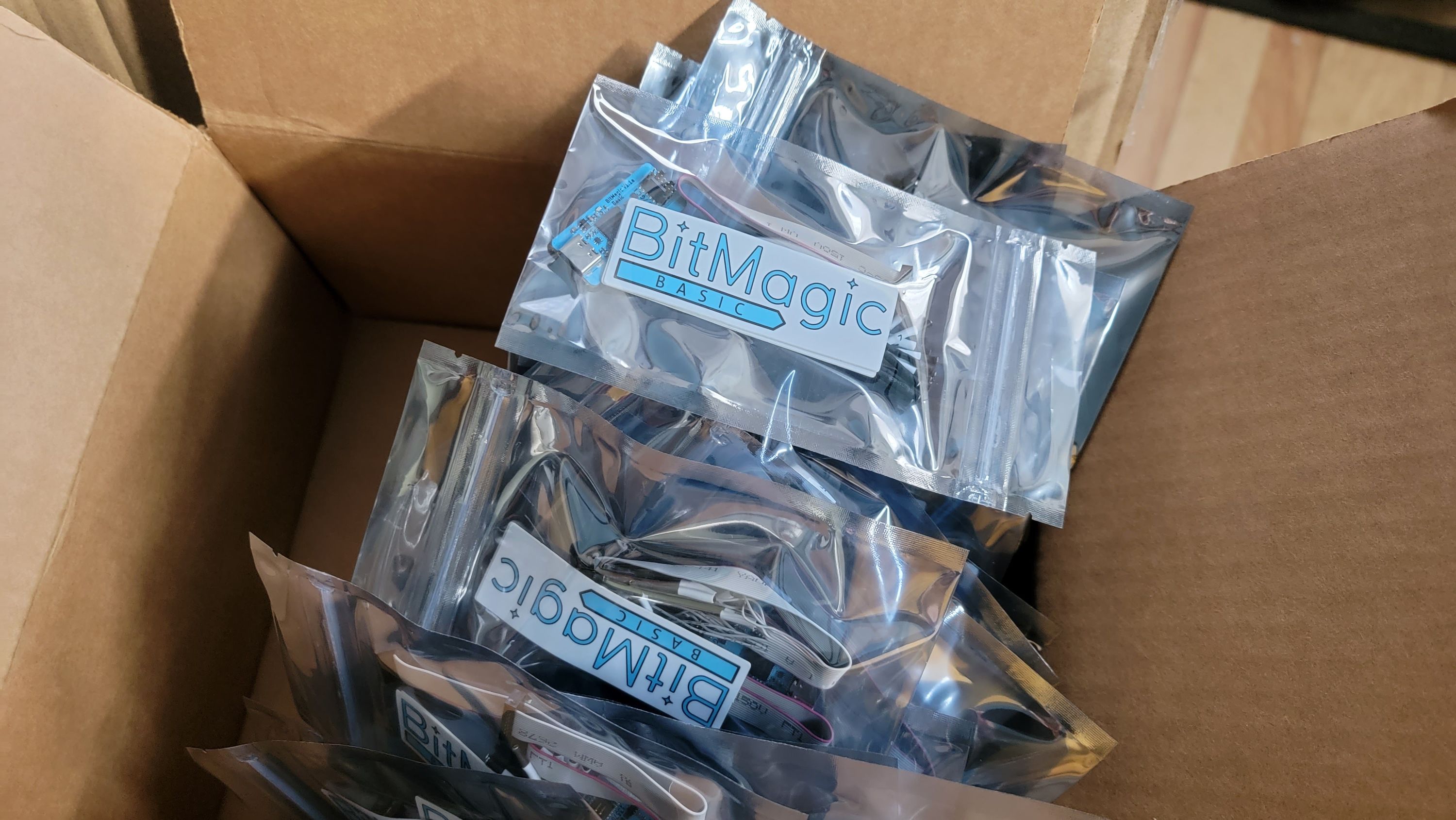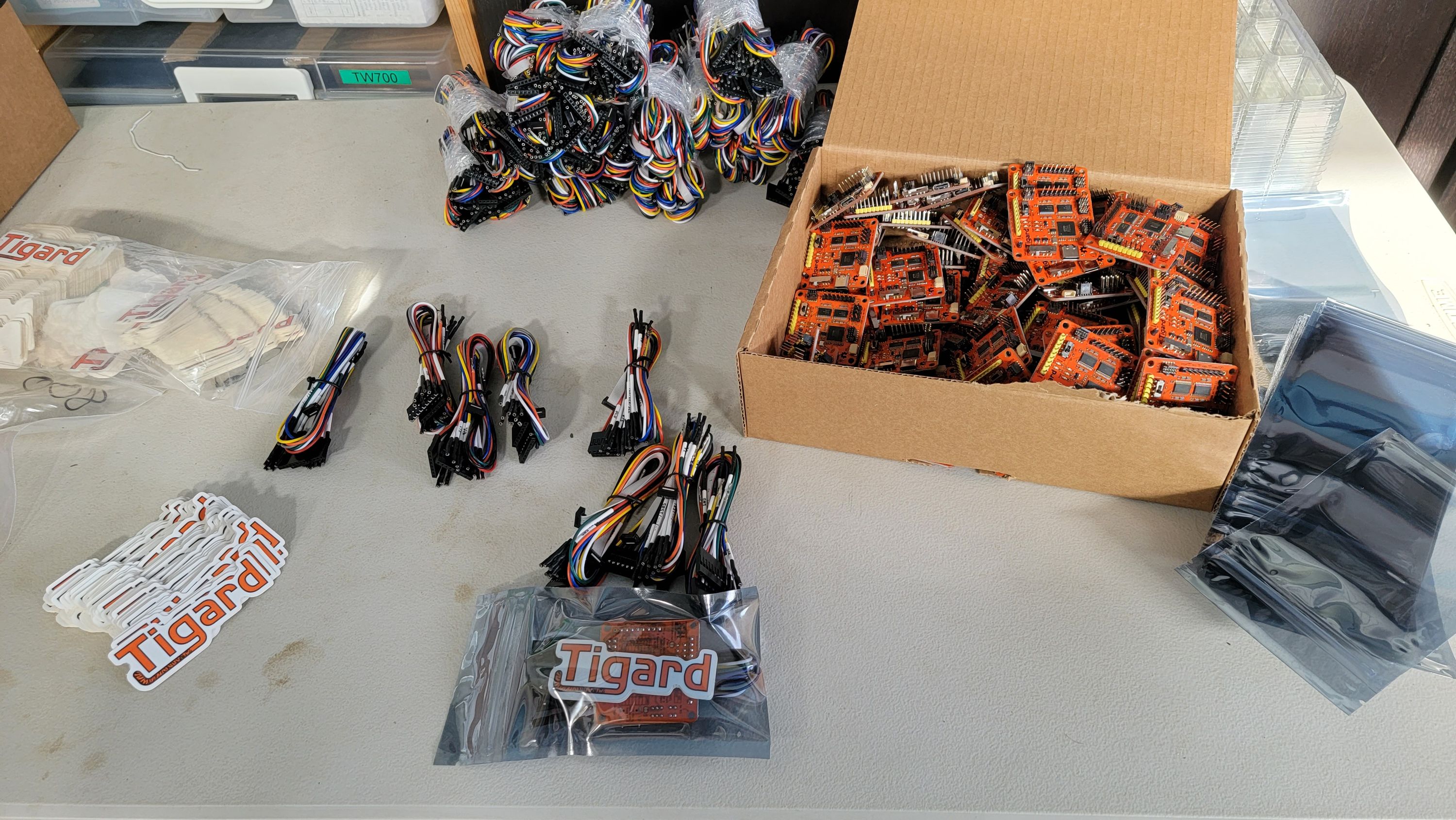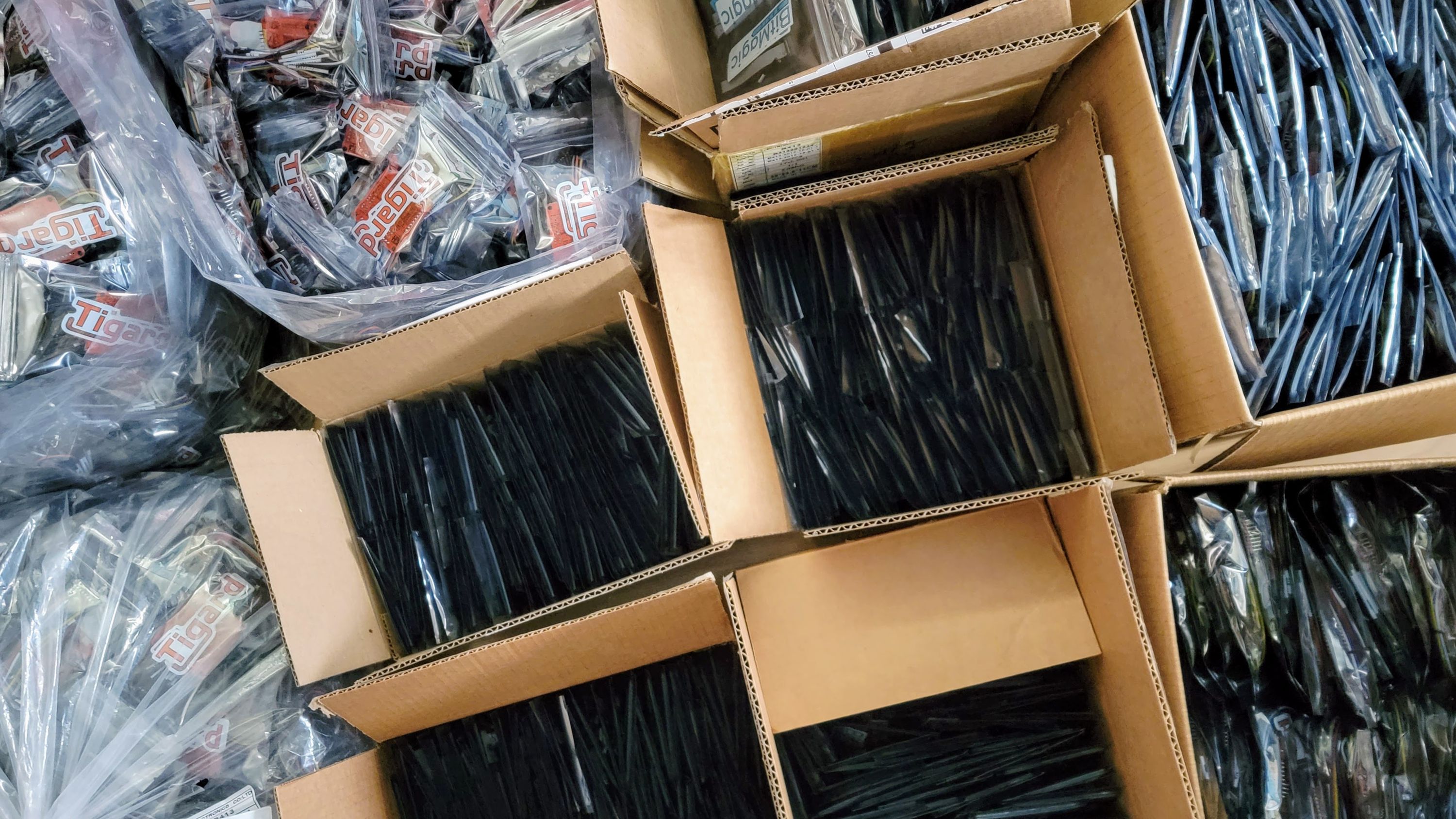It’s been a while since the last update. I won’t pretend I’ve been hard at work every minute since then - once the board and wiring harness orders were placed and confirmed, I checked out for a few weeks while all the manufacturing was in progress. At this point, nearly everything is complete - boards are packed and ready to go, and all that’s left for class kits is to pack the bundles with the new Tigard and Bitmagic boards. I’d love to get them all out to you (and reclaim some space in my office) but we’re currently waiting on getting product info registered in Mouser’s systems so they can properly receive - and then ship out - all of the Tigards, Bitmagics, and Class Kits. In the meantime, here’s what’s happened since the last update:
Bitmagic Basic Production
First, the Bitmagic Basic V1.1a boards arrived. These were the biggest risk, since we opted to forge ahead with V1.1a instead of the older V1.0. The differences appear minor - a USB type C connector and a blue board. Underneath, there was quite a bit more to be paranoid about:
- This was the first outsourced manufacturing run for BitMagic - opening the door for 'dumb mistakes' like assembling with components oriented incorrectly.
- Due to time constraints, we had the manufacturer source the Cypress chips used - running the risk of getting a low quality grey market components.
- We hand-assembled a prototype concurrently with the bulk order, hoping we could interrupt it in time if there were issues.
- We didn't have time to prepare a test and programming setup for the factory, so we didn't know if they worked until we got them in our hands!
Check out this tweet thread for details.
At fabrication, 5 boards were tested bad and not assembled. After in-house test and programming, there were 6 failures:
- 1 board had a USB connector that 'missed' the through-holes and was soldered above the board
- 1 board needed touchup on the USB ESD protection component
- 2 boards needed touchup on the USB data lines - USB-C worked one way but not the other!
- 1 board had the logic analyzer header on backwards - perhaps packaged on the reel backwards by the manufacturer?
- 1 board looked like it did not get hot enough in the reflow process
This is less than 1% failure rate, and all but one of them were reworked to functional state. It did make me realize that I need to be more exhaustive in my testing of USB type C devices, since two boards worked fine one way, but only failed when i flipped them over - they would have been missed if I had not unintentionally plugged them in differenly for programming and testing!
Tigard Production
Tigard production was far easier - V1.1 only has a few minor changes, and this would be the second production run. In addition, I fine tuned the test process I described in a previous update:
- The test jig was adjusted to fit the board better, accomodating different heights for the header and switch through-hole pins
- GPIO tests happened at a higher speed to ensure signal integrity
- SPI tests used a random bit pattern for the SPI flash read/write test
- If all tests passed, a unique serial number was programmed to the part
- If any tests failed, the failure code was programmed in place of a serial number, and the failure recorded
Reviewing the recorded test logs show that once the process was ironed out, it took up to 12 seconds per board to test, 8 boards failed the first time tested, but 7 of those worked fine when re-seated for a retest, leaving only one bad board out of the lot!
Wiring Harness Production
In terms of production lead time, the wiring harnesses were the longest, and as it turns out, also the longest overdue. My biggest worry was that they would not be done and shipped before Chinese New Year, but they finally arrived last week and work as expected.
Sticker Production
No project is complete without a logo, and no logo is really a logo until it is manifested in sticker form. Melinda from PDX Hackerspace had previously designed the Tigard logo, so I asked her for a BitMagic logo as well. She came up with something nice and simple that shows it’s logic analyzer roots with BASIC in a ‘flag’, while dotting the i’s with a bit of magic. Each board is packed with its wiring harneses and 2 stickers.
Kitting
The final step is packing each board for sale. I try to put this off as long as possible, mostly because it rougly triples the amount of volume it takes to store everything! Also - while kitting 10 or 20 bundles can be quite satisfying, 100 becomes a project and 1000’s can become an ordeal. To keep it manageable, I broke it into chunks of 100 which allowed me to keep count of all the parts and quickly catch if i forgot to include something in one of the packs. Packing the first 100 takes the longest, but by the end, I was able to pack 100 Tigard bundles in about 30 minutes.
Next Update
My hope is that by the next update, all the boards will be on their way to you or already in your hands, and I’ll have the Tigard documentation and how-to’s all organized for you! Until then, happy hacking.








